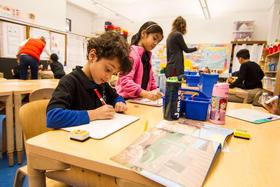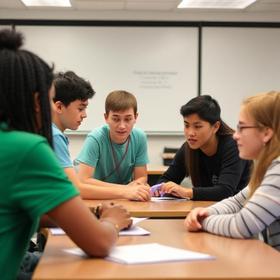Top Rankings
Liberty 53 School District ranks among the top 20% of public school district in Missouri for:
Category
Attribute
Overall Rank
Highest overall rank (Top 20%)
Reading/Language Arts Proficiency
Highest reading/language arts proficiency (Top 20%)
Graduation Rate
Highest graduation rate (Top 10%)
Diversity
Most diverse schools (Top 1%)
Community Size
Largest student body (number of students) (Top 1%)
For the 2025-26 school year, there is 1 public preschool serving 28 students in Liberty 53 School District.
Public Preschools in Liberty 53 School District have a diversity score of 0.62, which is more than the Missouri public preschool average of 0.54.
Minority enrollment is 43% of the student body (majority Black and Hispanic), which is more than the Missouri public preschool average of 36% (majority Black).
Overview
This School District
This State (MO)
# Schools
20 Schools
733 Schools
# Students
12,154 Students
201,896 Students
# Teachers
873 Teachers
18,018 Teachers
Student-Teacher Ratio
14:1
14:1
District Rank
Liberty 53 School District, which is ranked within the top 20% of all 553 school districts in Missouri (based off of combined math and reading proficiency testing data) for the 2022-2023 school year.
The school district's graduation rate of 93% has decreased from 95% over five school years.
Overall District Rank
#96 out of 555 school districts
(Top 20%)
(Top 20%)
Math Test Scores (% Proficient)
45%
40%
Reading/Language Arts Test Scores (% Proficient)
54%
43%
Science Test Scores (% Proficient)
43%
38%
Graduation Rate
93%
90%
Students by Ethnicity:
Diversity Score
0.43
0.54
% American Indian
n/a
n/a
% Asian
3%
2%
% Hispanic
9%
9%
% Black
6%
20%
% White
75%
64%
% Hawaiian
n/a
n/a
% Two or more races
7%
5%
All Ethnic Groups
District Revenue and Spending
The revenue/student of $15,088 is higher than the state median of $15,081. The school district revenue/student has stayed relatively flat over four school years.
The school district's spending/student of $13,653 is less than the state median of $13,908. The school district spending/student has stayed relatively flat over four school years.
Total Revenue
$183 MM
$13,447 MM
Spending
$166 MM
$12,401 MM
Revenue / Student
$15,088
$15,081
Spending / Student
$13,653
$13,908
Best Liberty 53 School District Public Preschools (2025-26)
School
(Math and Reading Proficiency)
(Math and Reading Proficiency)
Location
Quick Facts
Rank: n/an/a
9600 Ne 79th St
Kansas City, MO 64158
(816) 736-5324
Kansas City, MO 64158
(816) 736-5324
Gr: PK | 28 students Student-teacher ratio: 1:1 Minority enrollment: 43%
Recent Articles

Bullying, Name-Calling & Put-Downs: Parent Guide 2025
Practical tips for parents to address bullying, name-calling, and put-downs—with 2025 data, policies, and expert strategies.

What Is a Magnet School? (2025 Guide)
Explore what a magnet school is, how it works, and its benefits in 2025. Clear explanation for parents, students, and educators.

Cooperative Learning in 2025: Evidence, Best Practices & Challenges
Explore cooperative learning in 2025—new data, updated practices, expert insights for educators and families.




